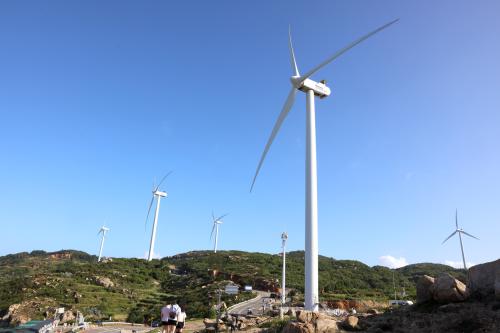The introduction of a carbon price into the Australian economy from July 1 this year is a landmark policy. It will begin the process of changing the incentive to emit carbon in Australia over a very long time scale.
Unfortunately the current policy, unless improved, is likely to cause unnecessary costs to the Australian economy in the short term. What is worse, these costs are likely to be far greater than any expected benefits.
There are many ways that a carbon pricing system can be designed but many fewer ways in which it should be designed, given the nature of the Australian economy and the uncertainty around global climate-change negotiations.
Political compromise and a lack of understanding about the role of uncertainty in designing carbon pricing mechanisms means the Australian approach is likely to be a problem once the time for implementation arrives.
What are the key problems that need urgent attention? First, the idea that the global price of carbon in 2012 or 2015 would be known with any precision when forecast in early 2011 was clearly an exercise in hope over rigour.
The starting price of $23?per tonne of CO2 was partly based on the idea that this would be close to the world price on July 1, 2012. Who knows what that price will actually be on the starting date, less than four months from now, but now the price varies around $6 to $9 per tonne.
Thus Australia is in danger of introducing a carbon price between three and four times the world price.
Second, the policy in 2015 will switch from a fixed carbon price at about $25 per tonne (in 2012 prices) or $28 in 2015 prices to a carbon trading system with a floor price of $15 per tonne in 2015 prices and no effective ceiling price. Most of the economics literature in this area focuses on imposing an effective ceiling price to bind the economic costs close to the expected benefits.
The combination of a floor and ceiling price reduces the volatility and hence the uncertainty in the expected price. Now, consider what happens if the world price in 2015 is below the floor price. Australia will have a carbon price of about $28 on June 30, 2015, which would fall to $15 per tonne on July 1, 2015.
Under this very plausible scenario, the much higher carbon prices paid by Australians between 2012 and 2015 would be unnecessary waste.
More importantly, the value of permits could drop by close to 50?per cent on July 1, 2015. This would cause enormous disruption to carbon abatement policy in Australia – much akin, but on a much larger scale, to the known consequences of stopping various renewable energy subsidies halfway through a scheme.
It is not sound policy to have such wild swings in a carbon price, yet it is a very likely scenario. This type of inconsistency destroys the incentive to invest in carbon abatement activities.
Another argument for a high carbon price in 2012 is the belief that no one will change behaviour at a price below $23 per tonne. This shows a complete lack of understanding of the investment decision process. Companies and individuals making energy production and consumption decisions take into account the expected future price of carbon and the expected volatility in that price over the horizon of the investment project.
A high price today that is expected to collapse because of a faulty design (not to mention the lack of bipartisan support) will merely cause input costs of energy to rise but generate little investment in reducing emissions. A price that is low but expected to rise in future years in a robust system, with the interests of key players aligned through clever allocation of permits, will likely generate a far greater investment response. Uncertainty stifles investment. The current carbon pricing system has too much uncertainty.
Instead of attempting to lead the debate on reducing global emissions in a world losing interest in this debate, the case for a bipartisan carbon price in Australia should be based on our national interest within a realistic assessment of how we can contribute to the global policy debate. The national interest argument is that having no carbon policy generates uncertainty, which inhibits investment in all types of energy systems, which has significant economic costs.
It is in Australia’s national interest to have the price of carbon on July 1 this year starting at closer to $10 per tonne. This price balances the benefits of reducing investment uncertainty against the costs of climate abatement policy.
It appears, as well, that this may be closer to the world price, which helps offset the potential competitiveness problems the current policy creates.
Until the world takes more concrete actions, this is where Australian policy should be focused. When the world takes greater action, the carbon price can be moved up.
The urgent question today is what will the government do between now and July 1 to fix the potential problems created by badly designing the carbon pricing system?
If the government does not realise the potential problems it faces and does nothing to address them, there is a silver lining. A significant carbon price shock will give economists a good set of data to properly evaluate the gross domestic product and employment consequences of this type of policy so we can go back and more accurately recalibrate our models for next time.



Commentary
Op-edCarbon Price Over $10 Makes No Sense
March 7, 2012